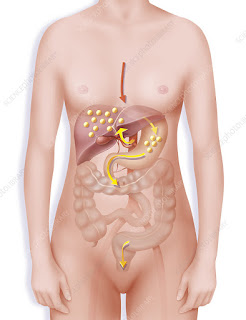Exploring Common Mental Illnesses

****Attention: Before we begin, a quick warning. This blog post discusses sensitive topics such as mental illness, including eating disorders and PTSD. Viewer discretion is advised.
What is mental illness? The National Alliance on Mental Illness defines it as a condition that significantly affects a person’s thinking, feeling, or mood over a prolonged period, impacting their daily life. You might wonder, “Is depression a mental illness? What about anxiety?” Absolutely. In fact, they are among the most common types.
In this blog, abdulgafaar delves into 10 of the most prevalent mental illnesses:
1. **Anxiety Disorders**: Affecting 18.1% of adults in the U.S., or about 40 million people each year, anxiety disorders are characterized by overwhelming worry that disrupts daily life, such as sleep, relationships, school, and work. Despite their prevalence, only 36.9% seek help. Types include Generalized Anxiety Disorder (GAD), Panic Disorder, Social Anxiety Disorder (SAD), and Obsessive-Compulsive Disorder (OCD). Treatment options range from therapy to medication.
2. **Personality Disorders**: These involve enduring patterns of behavior, emotions, and thoughts that deviate significantly from societal norms, causing distress and impaired functioning. The National Institute of Mental Health estimates 9.1% of people exhibit traits of personality disorders. Symptoms include distorted self-perception, emotional instability, and poor impulse control. While they can’t be cured, they are treatable with therapy and medication.
3. **Attention Deficit Hyperactivity Disorder (ADHD)**: ADHD isn’t just for kids; it affects people of all ages. Symptoms include difficulty concentrating, forgetfulness, and restlessness. There are three types: Combined, Impulsive/Hyperactive, and Inattentive. Treatment often involves medication, life coaching, education, and therapy.
a. **Post-Traumatic Stress Disorder (PTSD)**: Affecting 6.8% of the U.S. population, PTSD arises from experiencing traumatic events like natural disasters or abuse. Symptoms include flashbacks, nightmares, and severe anxiety. Treatment options include Eye Movement Desensitization and Reprocessing (EMDR) and Cognitive Behavioral Therapy (CBT).
4. **Depression**: Impacting 6.7% of U.S. adults, depression is more than just feeling down; it involves persistent low mood and loss of interest in activities. Women often experience it as sadness and guilt, while men might feel fatigue and irritability. Treatment includes various forms of therapy and medication.
5. **Bipolar Disorder**: With an estimated prevalence of 2.8%, bipolar disorder involves severe mood swings from mania to depression. These shifts are uncontrollable and can be debilitating. Treatment involves medication and counseling to help manage the extremes.
6. **Eating Disorders**: Affecting 2.7% of those seeking treatment, eating disorders go beyond dissatisfaction with one’s body. They include cycles of bingeing, purging, or severe restriction, driven by intense distress about body image. Common types are Anorexia Nervosa and Bulimia, but others include Eating Disorders Not Otherwise Specified (EDNOS) and Avoidant/Restrictive Food Intake Disorder (ARFID). Recovery is possible with therapy, residential treatment, and medication.
7. **Obsessive-Compulsive Disorder (OCD)**: Affecting 2.3% of individuals, OCD involves recurring, uncontrollable thoughts (obsessions) and behaviors (compulsions) like excessive cleaning or checking. It causes significant anxiety and requires a combination of therapy and medication for management.
8. **Autism Spectrum Disorder (ASD)**: Diagnosed in 1.2% of children, ASD is characterized by challenges in social interaction, communication, and repetitive behaviors. While symptoms vary, treatments often include specialized education, behavioral therapies, and medication.
9. **Schizophrenia and Psychotic Disorders**: About 1% of people experience psychosis, involving breaks from reality, such as hallucinations and delusions. Schizophrenia is the most common psychotic disorder. Treatment includes medication, therapy, and case management to help manage symptoms.
Have you or a loved one experienced any of these conditions? Were any of the symptoms surprising? Which mental illnesses would you like to learn more about? Share your thoughts in the comments below.
For more educational content on mental health, stay tuned to Abdulgafaar blog post. If you need support, contact your insu!rance provider, local counseling clinic, or county crisis line. Help is available.
*Thank You For Reading This Blog*



Comments
Post a Comment